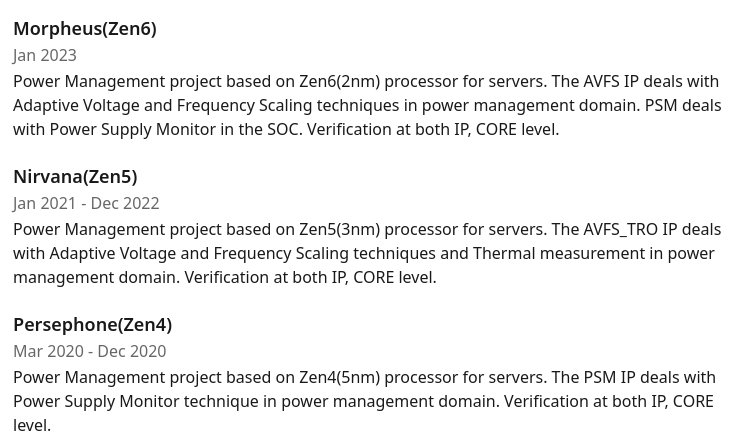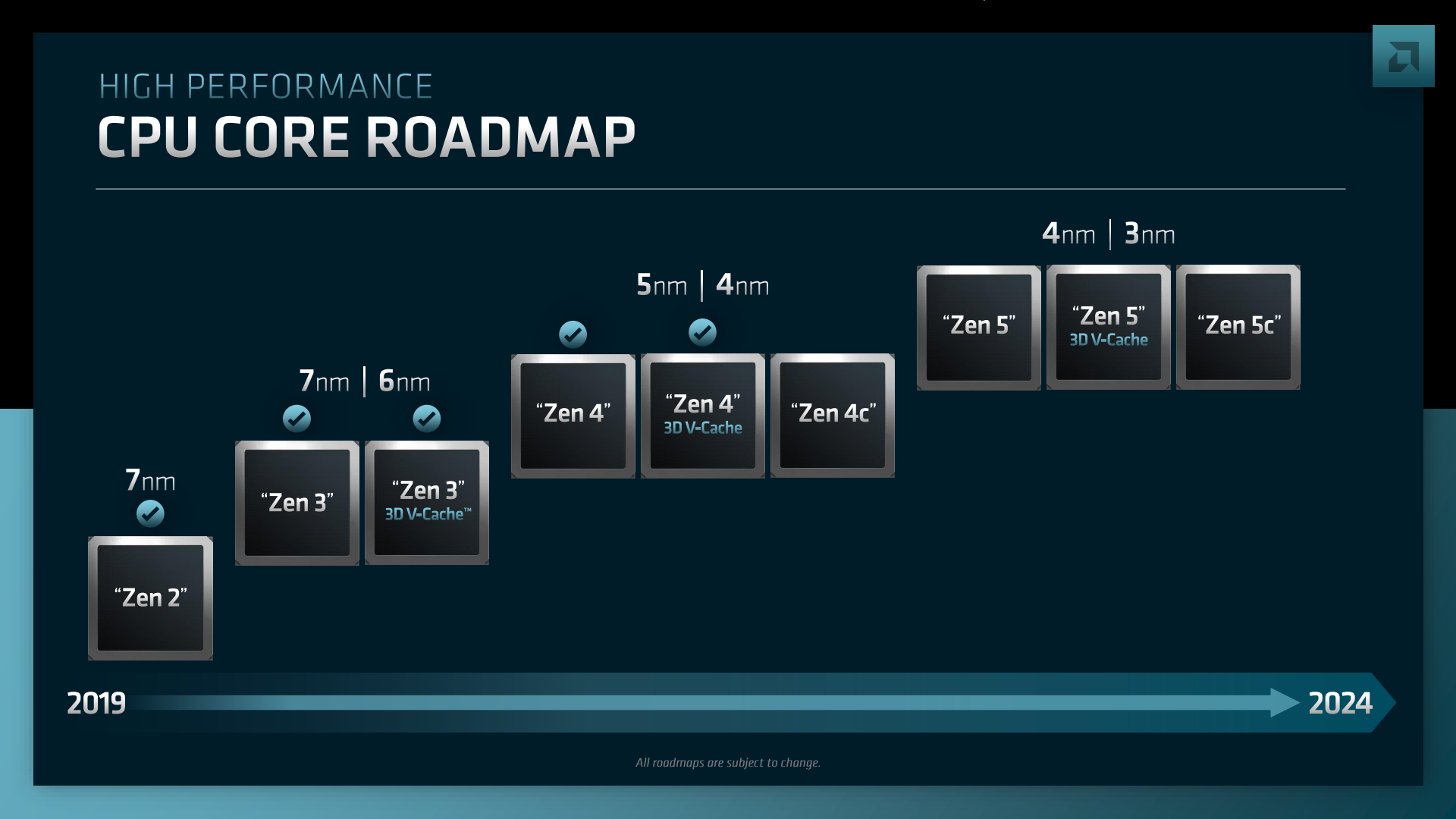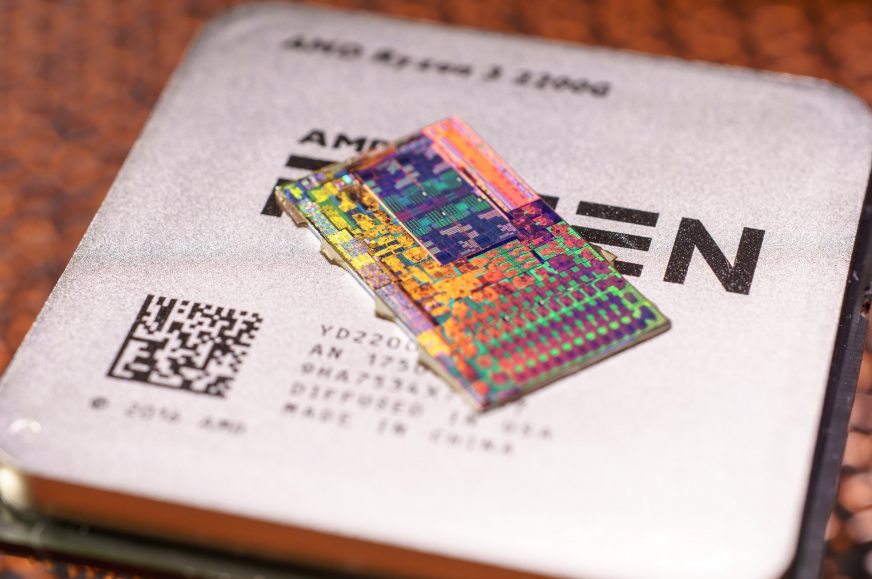First information about Zen 6 architecture revealed on LinkedIn
Few days ago there was news that GeForce RTX 5000 graphics (the Blackwell architecture GPUs in them) will not yet use the 3nm manufacturing node, reportedly staying on 4nm technology instead. Now, there is news about another product that will use a new technology for a change – AMD processors with Zen 6 architecture. We learned that thanks to one of the employees leaking this important detail on the LinkedIn social network.
The LinkedIn profile was noticed by Twitter user davideneco25320, who pointed the “classified information” shared by the unnamed employee out. This engineer works on Epyc server processors’ power management. These CPUs have specific IO chiplets different from the desktop Ryzens (but common with Threadrippers), though the power management probably touches the CPU chiplets themselves, which are shared. And the engineer in question apparently writes about those in his resume.
He states that he has worked or is working on processors with “Persephone” (Zen 4), “Nirvana” (Zen 5) and finally Zen 6 cores. The codenames Persephone for Zen 4 and Nirvana for Zen 5 were already known – they are internal designations for the architecture of the cores themselves, while CPU chiplets, IO chiplets and then the processors based on them all have their own different codenames. The codename for Zen 6 is “Morpheus” (this is new information).
But what is crucial is that the engineer also lists the manufacturing node used for the processors, which is also new information. According to them, Zen 6 will already be made on a 2nm process node, the next “big” generation after 3nm. So we likely won’t see the same situation that happened with Zen 2 and 3, where two architectures in a row were made on the same technology. Thanks to the use of 2nm technology, Zen 6 could benefit from greatly improved power efficiency. On the other hand, this will make Zen 6 critically dependent on TSMC not slipping up with the 2nm node and hitting all targets. We’re likely talking about TSMC’s 2nm technology here, and the company will be deploying GAAFET transistors for the first time on this node, which is a potential risk.
Zen 5 uses a 3nm node according to this source. This is what was originally planned, but in the meantime some implementations were switched to the 4nm node instead (AMD has already announced this officially). The engineer may be talking about a version of Zen 5 that is still slated to use the 3nm node even after these changes, but it’s also possible they may simply be stating the better of the two technologies that the core can use – this doesn’t necessarily mean that Epyc server processors with Zen 5 will use 3nm chiplets in the end. The engineer apparently worked on the verification of the Zen 5 design between January 2021 and December 2022, after his work on Zen 4that took place between March 2020 and December 2020.

According to this LinkedIn confession, this same work on Zen 6 started in January 2023. If we use the previous to try to guess when Zen 6 might come out, work on Zen 4 started two and a half years before the release of the Ryzen 7000. However, it’s possible that the employee in question only joined the team mid-development. He’s been working on Zen 5 since early 2021, and those processors probably won’t come out until the first half of 2024, three years later. If it’s the same for Zen 6, then the finished desktop processors – perhaps under the Ryzen 9000 designation – could come out in late 2025 or early 2026. That might actually fit the estimated availability of TSMC’s 2nm process. But this is a very rough guide and we could probably be off by as much as half a year, if not more.

It should also be noted that just as Zen 5 was previously intended to use only the 3nm node, but then delays forced AMD to change the plan and redesign some of the processors of this architecture for 4nm technology, the same may happen here. So using the 2nm node for Zen 6 is the original or currently valid plan, but there’s no guarantee things won’t change again.
Source: WCCFtech
English translation and edit by Jozef Dudáš
⠀









Boa tarde e meus parabéns pelo site e pela matéria
This is great and all but when can we see 0.9nm? LOL